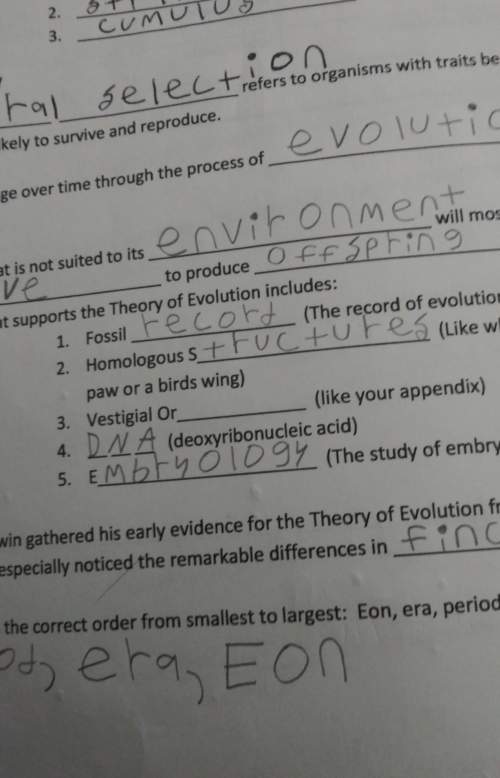
Physics, 15.01.2021 07:10 madisongibson62
Mature salmon swim upstream, returning to spawn at their birthplace. During the arduous trip they leap vertically upward over waterfalls as high as 2.93 m. With what minimum speed (in m/s) must a salmon launch itself into the air to clear a 2.93-m waterfall?

Answers: 1


Another question on Physics

Physics, 22.06.2019 08:00
Why is it important always to use horizontal bars in unit fractions when performing unit conversions?
Answers: 3

Physics, 22.06.2019 18:30
Anonzero net force acts on a particle and does work. which one of the following statements is true? the kinetic energy of the particle changes, but the speed of the particle does not change. the kinetic energy of the particle does not change, but the speed of the particle does change. the kinetic energy of the particle changes, but the velocity of the particle does not change. the kinetic energy and the speed of the particle change, but the velocity of the particle does not change. the kinetic energy, speed, and velocity of the particle change.
Answers: 1

Physics, 22.06.2019 21:10
Which radioisotope is used in dating geological formations?
Answers: 3

Physics, 23.06.2019 03:20
Neutrons are placed in a magnetic field with magnitude 2.30 t. part a part complete what is the energy difference between the states with the nuclear spin angular momentum components parallel and antiparallel to the field? δe δ e = 2.77×10−7 ev previous answers correct part b part complete which state is lower in energy: the one with its spin component parallel to the field or the one with its spin component antiparallel to the field? which state is lower in energy: the one with its spin component parallel to the field or the one with its spin component antiparallel to the field? parallel antiparallel previous answers correct part c part complete how do your results compare with the energy states for a proton in the same field (δe=4.05×10−7ev)? how do your results compare with the energy states for a proton in the same field this result is smaller than but comparable to that found in the example for protons. this result is greater than but comparable to that found in the example for protons. previous answers correct part d the neutrons can make transitions from one of these states to the other by emitting or absorbing a photon with energy equal to the energy difference of the two states. find the frequency of such a photon. f f = mhz previous answersrequest answer incorrect; try again; 5 attempts remaining
Answers: 2
You know the right answer?
Mature salmon swim upstream, returning to spawn at their birthplace. During the arduous trip they le...
Questions

English, 16.11.2020 22:10



Biology, 16.11.2020 22:10

Mathematics, 16.11.2020 22:10



Social Studies, 16.11.2020 22:10



History, 16.11.2020 22:10

Mathematics, 16.11.2020 22:10



Mathematics, 16.11.2020 22:10

Chemistry, 16.11.2020 22:10

Mathematics, 16.11.2020 22:10

Computers and Technology, 16.11.2020 22:10

Mathematics, 16.11.2020 22:10




